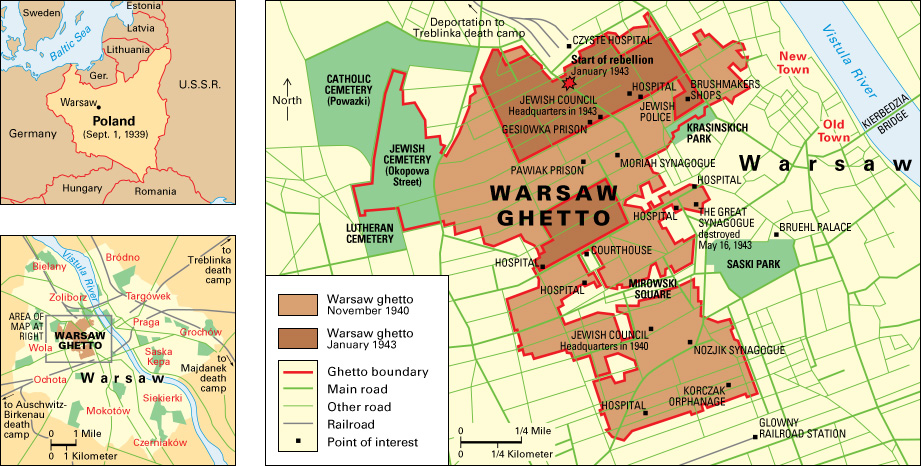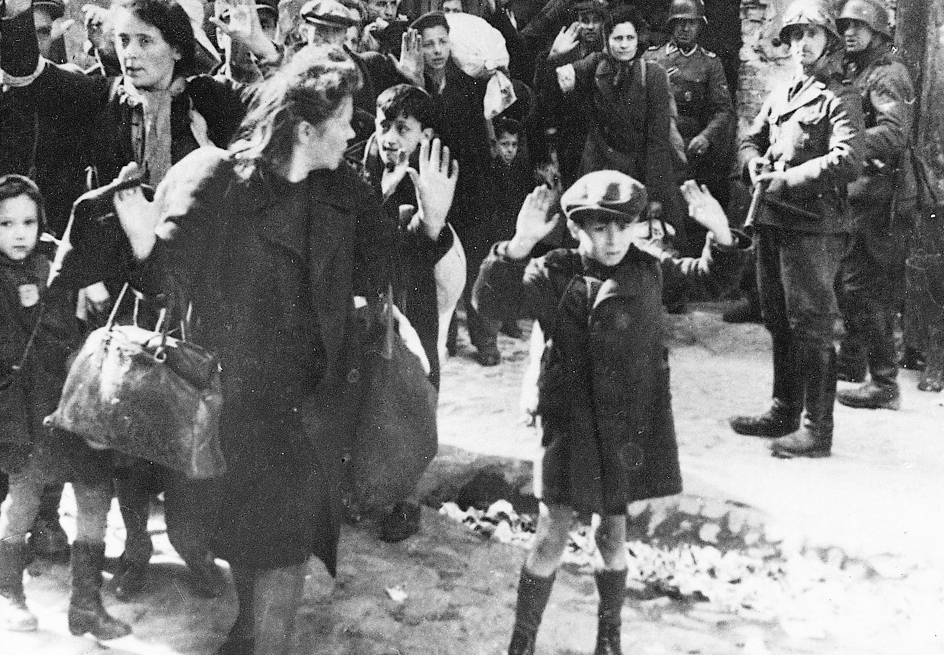Warsaw ghetto was a section of Warsaw, Poland, where Nazi Germany held Jewish people during World War II (1939-1945). Warsaw is the capital and largest city of Poland. The ghetto there was the largest of many set up by Germany throughout eastern Europe. The Nazis followed many brutal policies rooted in anti-Semitism (prejudice against Jews). They forced East European Jews into ghettos and deprived them of basic human rights. The Nazis eventually sent nearly all the ghetto residents to death camps. The mass murder of European Jews by the Nazis is known as the Holocaust.

Before the German invasion of Poland on Sept. 1, 1939, more than 350,000 Jews lived in Warsaw. It was the largest Jewish community in Europe. Warsaw surrendered to Germany in late September. The Nazis then enforced a number of anti-Jewish laws.
The Nazis established the Warsaw ghetto in the autumn of 1940. All of Warsaw’s Jewish residents were forced to move into an area covering just 1.3 square miles (3.4 square kilometers). A wall topped with barbed wire surrounded the ghetto. Armed guards patrolled the wall. With the addition of Jews from nearby areas, the ghetto’s population peaked at over 400,000 people.
Food and medical supplies were scarce in the Warsaw ghetto. Tens of thousands of people died from disease, starvation, and other causes. In July 1942, German troops began removing Jews from the ghetto. Most were sent to death camps and killed. By September, just 70,000 people remained in the ghetto.

In January 1943, people in the ghetto took up arms and resisted German troops. In April, the resistance escalated into an organized rebellion. The Germans crushed the uprising in less than four weeks and burned the ghetto. Some 7,000 Jews died in the fighting. Another 7,000 were captured and immediately shot. The Nazis sent the remainder of the ghetto’s population—some 50,000 people—to concentration camps.
Several thousand Jews who had escaped the ghetto continued to resist with underground groups. The Nazis withdrew from Warsaw in January 1945.
As a result of direct killing, disease, starvation, and other causes, about 90 percent of Warsaw’s prewar Jewish population died during World War II. Today, a museum and several memorials stand throughout the site of the former ghetto.
